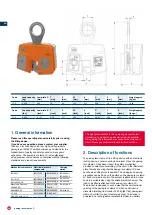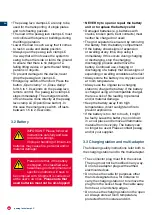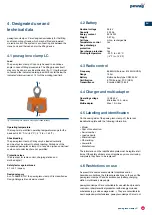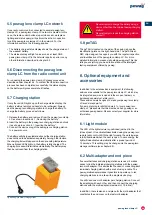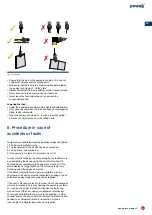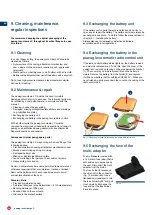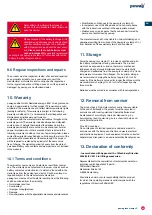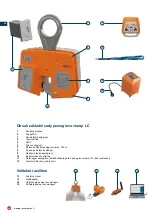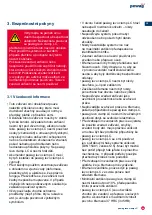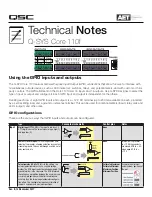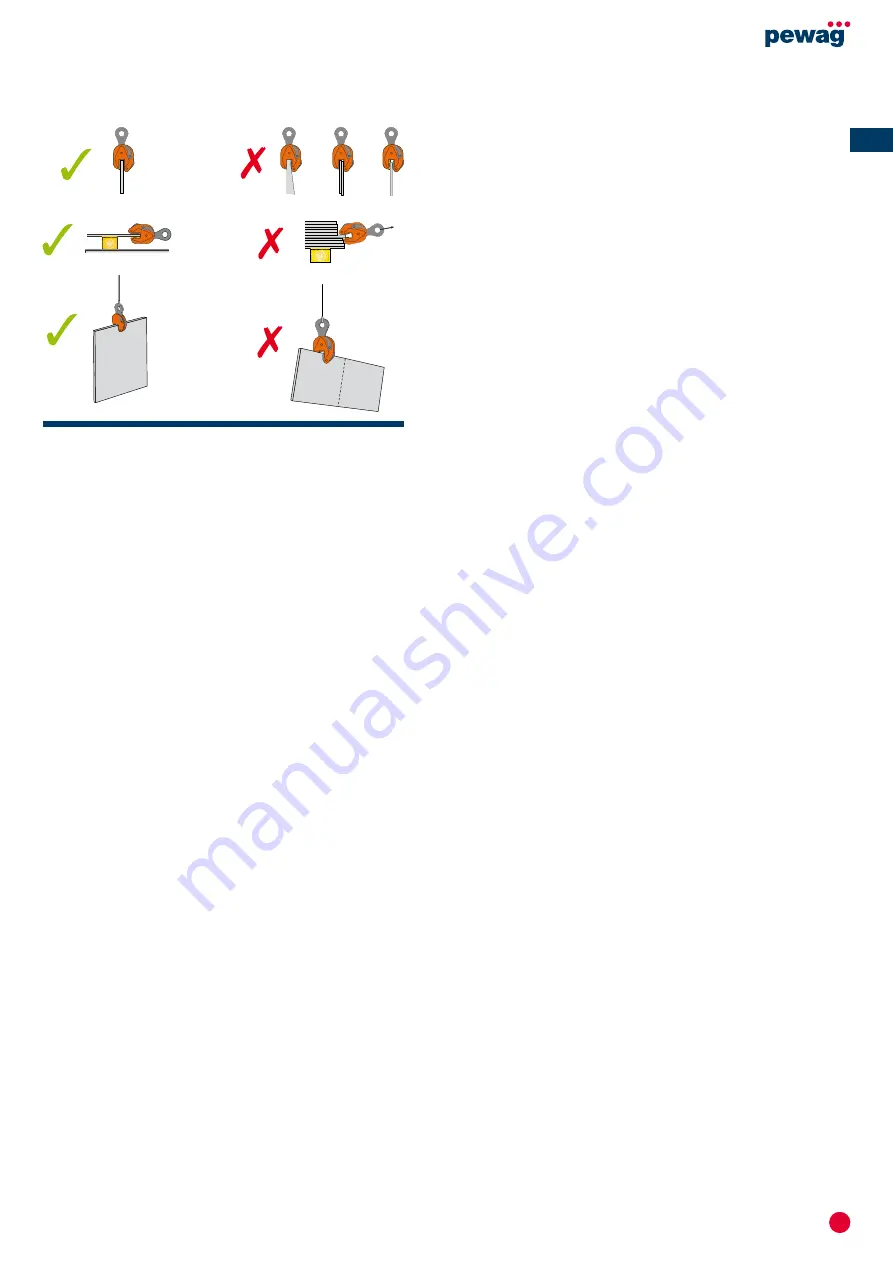
31
EN
pewag levo clamp LC
• Ensure that the load or the pewag levo clamp LC does not
collide with objects and/or building parts.
• Make sure that the load is in a stable position before taking
the pewag levo clamp LC off the plate.
• Always ensure that the load is within your direct range of vision.
• Never transport a load over the heads of persons.
• Never leave the load unattended or unsecured in a
suspended position.
Lowering the load:
• Lower the load slowly and bring it into a stable and safe position.
• Only open the cam when the load has been secured against
tilting, falling, sliding etc.
• Open the pewag levo clamp LC in such a way that neither
persons nor objects may be hit by falling parts.
8. Procedure in case of
accidents or faults
There are four possible reasons why the status display can light up:
1. The device is malfunctioning.
2. The test interval for the device has been exceeded.
3. Pairing mode (see section 5.4).
4. If the pewag levo clamp LC is turned on and off.
In case of malfunctioning, try acknowledging the fault memory
by deactivating the device using the on/off button. Wait 10
seconds before reactivating the pewag levo clamp LC. If the
status display no longer lights up, the error was temporary.
Continue using the device as normal.
If the status display lights up again immediately or after a
short period, the device must be inspected by pewag or by an
authorised pewag dealer and repaired as required.
If the cam is blocked or stuck to the load, do not use excessive
violence to release it. This may damage the pewag levo clamp
LC or parts of it. Lower the load and resolve the fault using
manual force. If the cam, casing or attachment mechanism
show signs of deformation (e.g. due to overloading) or other
unusual events, the device must be removed from service and
handed to a competent person for inspection or repair
(see chapter 9.9 Regular inspections and repairs).
Fig. 11 correct use






